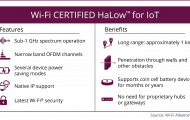Article
Blockchain ensures that your online baby food order is legit | CNet
My Comments
On this Website, I have previously covered how certain technologies that work with our smartphones are being used to verify the authenticity and provenance of various foodstuffs and premium drinks.
It has been in the form of NFC-enabled bottle tops used on some premium liquor along with smartphone apps to determine if the drink was substituted along with the supplier being able to provide more information to the customer. In France, the QR code has been used as a way to allow consumers to identify the provenance of processed meat sold at the supermarket in response to the 2013 horsemeat scandal that affected the supply of processed beef and beef-based “heat-and-eat” foods in Europe.
The problem of food and beverage adulteration and contamination is rife in China and other parts of Asia but has happened around other parts of the world such as the abovementioned horsemeat crisis and there is a perpetual question for the US market regarding whether extra-virgin olive oil is really extra-virgin. It can extend to things like whether the produce is organic or, in the case of eggs or meat, whether these were free-range or not. This has led various technologists to explore the use of IT technologies to track the authenticity and provenance of what ends up in our fridges, pantries or liquor cabinets.
The latest effort is to use blockchain which is the “distributed ledger” technology that makes bitcoin, Ethereum and other cryptocurrencies tick. This time, it is used in conjunction with NFC, QR codes and mobile-platform native apps to create an electronic “passport” for each packaged unit of food or drink. This was put together by a Chinese-based startup who created this technology in response to a cat belonging to one of the founders needing to go to the vet after eating contaminated food that the founder had bought from an eBay-like online market based in China.
The initial setup has a tamper-evident seal wrapped around the tin or other packaging with this seal having an NFC element and a QR code printed on it. A smartphone app is used to scan the QR code and it uses the NFC element which fails once the seal is broken to verify that the seal is still intact. Once this data is read on the mobile device, the food item’s electronic “passport” then appears showing what was handled where in the production chain.
At the moment, the seal is like a hospital bracelet which is sturdy enough to be handled through the typical logistics processes but is fragile enough to break if the food container is opened. This could work with most packaged foodstuffs but food suppliers could then design this technology to work tightly with their particular kind of packaging.
The blockchain-driven “passport” could be used to identify which farm was used as the source of the produce concerned, with a human-readable reference regarding the agricultural techniques used i.e. organic or free-range techniques being used. In the case of processed meat and meat-based foods, the technology can be used to verify the kind and source of the meat used. This is important for religious or national cultures where certain meats are considered taboo like the Muslim and Jewish faiths with pig-based meats, British and Irish people with horsemeat or Australians with kangaroo meat.
Once the various packaging-technology firms improve and implement these technologies, it could facilitate how we can be sure that we aren’t being sold a “pig in a poke” when we buy food for ourselves or our pets.


